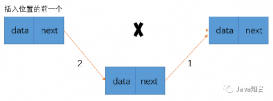前言
流程控制语句是用来控制程序中各语句执行顺序的语句,可以把语句组合成能完成一定功能的小逻辑模块。
控制语句分为三类:顺序、选择和循环。
顺序结构:代表“先执行a,再执行b”的逻辑。
选择结构:代表“如果…,则…”的逻辑。
循环结构:代表“如果…,则重复执行…”的逻辑。
实际上,任何软件和程序,小到一个练习,大到一个操作系统,本质上都是由“变量、选择语句、循环语句”组成。
这三种基本逻辑结构是相互支撑的,它们共同构成了算法的基本结构,无论怎样复杂的逻辑结构,都可以通过它们来表达。
if-then
它告诉你要只有 if 后面是 true 时才执行特定的代码。
|
1
2
3
4
5
6
7
|
void applyBrakes() { // the "if" clause: bicycle must be moving if (isMoving){ // the "then" clause: decrease current speed currentSpeed--; }} |
如果 if 后面是 false, 则跳到 if-then 语句后面。语句可以省略中括号,但在编码规范里面不推荐使用,如:
|
1
2
3
4
5
|
void applyBrakes() { // same as above, but without braces if (isMoving) currentSpeed--;} |
if-then-else
该语句是在 if 后面是 false 时,提供了第二个执行路径。
|
1
2
3
4
5
6
7
|
void applyBrakes() { if (isMoving) { currentSpeed--; } else { System.err.println("The bicycle has already stopped!"); } } |
下面是一个完整的例子:
|
1
2
3
4
5
6
7
8
9
10
11
12
13
14
15
16
17
18
19
20
21
22
23
|
class IfElseDemo { /** * @param args */ public static void main(String[] args) { int testscore = 76; char grade; if (testscore >= 90) { grade = 'A'; } else if (testscore >= 80) { grade = 'B'; } else if (testscore >= 70) { grade = 'C'; } else if (testscore >= 60) { grade = 'D'; } else { grade = 'F'; } System.out.println("Grade = " + grade); }} |
输出为:Grade = C
switch
switch 语句可以有许多可能的执行路径。可以使用 byte, short, char, 和 int 基本数据类型,也可以是枚举类型(enumerated types)、String 以及少量的原始类型的包装类 Character, Byte, Short, 和 Integer。
下面是一个 SwitchDemo 例子:
|
1
2
3
4
5
6
7
8
9
10
11
12
13
14
15
16
17
18
19
20
21
22
23
24
25
26
27
28
29
30
31
32
33
34
35
36
37
38
39
40
41
42
43
44
45
46
47
48
49
50
51
52
|
class SwitchDemo { /** * @param args */ public static void main(String[] args) { int month = 8; String monthString; switch (month) { case 1: monthString = "January"; break; case 2: monthString = "February"; break; case 3: monthString = "March"; break; case 4: monthString = "April"; break; case 5: monthString = "May"; break; case 6: monthString = "June"; break; case 7: monthString = "July"; break; case 8: monthString = "August"; break; case 9: monthString = "September"; break; case 10: monthString = "October"; break; case 11: monthString = "November"; break; case 12: monthString = "December"; break; default: monthString = "Invalid month"; break; } System.out.println(monthString); }} |
break 语句是为了防止 fall through。
|
1
2
3
4
5
6
7
8
9
10
11
12
13
14
15
16
17
18
19
20
21
22
23
24
25
26
27
28
29
30
31
32
33
34
35
36
37
38
39
40
41
42
43
44
45
46
47
48
49
50
|
class SwitchDemoFallThrough { /** * @param args */ public static void main(String[] args) { java.util.ArrayList<String> futureMonths = new java.util.ArrayList<String>(); int month = 8; switch (month) { case 1: futureMonths.add("January"); case 2: futureMonths.add("February"); case 3: futureMonths.add("March"); case 4: futureMonths.add("April"); case 5: futureMonths.add("May"); case 6: futureMonths.add("June"); case 7: futureMonths.add("July"); case 8: futureMonths.add("August"); case 9: futureMonths.add("September"); case 10: futureMonths.add("October"); case 11: futureMonths.add("November"); case 12: futureMonths.add("December"); break; default: break; } if (futureMonths.isEmpty()) { System.out.println("Invalid month number"); } else { for (String monthName : futureMonths) { System.out.println(monthName); } } }} |
输出为:
August
September
October
November
December
技术上来说,最后一个 break 并不是必须,因为流程跳出 switch 语句。但仍然推荐使用 break ,主要修改代码就会更加简单和防止出错。default 处理了所有不明确值的情况。
下面例子展示了一个局域多个 case 的情况。
|
1
2
3
4
5
6
7
8
9
10
11
12
13
14
15
16
17
18
19
20
21
22
23
24
25
26
27
28
29
30
31
32
33
34
35
36
37
38
39
|
class SwitchDemo2 { /** * @param args */ public static void main(String[] args) { int month = 2; int year = 2000; int numDays = 0; switch (month) { case 1: case 3: case 5: case 7: case 8: case 10: case 12: numDays = 31; break; case 4: case 6: case 9: case 11: numDays = 30; break; case 2: if (((year % 4 == 0) && !(year % 100 == 0)) || (year % 400 == 0)) numDays = 29; else numDays = 28; break; default: System.out.println("Invalid month."); break; } System.out.println("Number of Days = " + numDays); }} |
输出为:Number of Days = 29
使用 String
Java SE 7 开始,可以在 switch 语句里面使用 String,下面是一个例子
|
1
2
3
4
5
6
7
8
9
10
11
12
13
14
15
16
17
18
19
20
21
22
23
24
25
26
27
28
29
30
31
32
33
34
35
36
37
38
39
40
41
42
43
44
45
46
47
48
49
50
51
52
53
54
55
56
57
58
59
60
61
62
63
64
65
66
67
68
|
class StringSwitchDemo { public static int getMonthNumber(String month) { int monthNumber = 0; if (month == null) { return monthNumber; } switch (month.toLowerCase()) { case "january": monthNumber = 1; break; case "february": monthNumber = 2; break; case "march": monthNumber = 3; break; case "april": monthNumber = 4; break; case "may": monthNumber = 5; break; case "june": monthNumber = 6; break; case "july": monthNumber = 7; break; case "august": monthNumber = 8; break; case "september": monthNumber = 9; break; case "october": monthNumber = 10; break; case "november": monthNumber = 11; break; case "december": monthNumber = 12; break; default: monthNumber = 0; break; } return monthNumber; } public static void main(String[] args) { String month = "August"; int returnedMonthNumber = StringSwitchDemo.getMonthNumber(month); if (returnedMonthNumber == 0) { System.out.println("Invalid month"); } else { System.out.println(returnedMonthNumber); } }} |
输出为:8
注:switch 语句表达式中不能有 null。
while
while 语句在判断条件是 true 时执行语句块。语法如下:
|
1
2
3
|
while (expression) { statement(s)} |
while 语句计算的表达式,必须返回 boolean 值。如果表达式计算为 true,while 语句执行 while 块的所有语句。while 语句继续测试表达式,然后执行它的块,直到表达式计算为 false。完整的例子:
|
1
2
3
4
5
6
7
8
9
10
11
12
13
|
class WhileDemo { /** * @param args */ public static void main(String[] args) { int count = 1; while (count < 11) { System.out.println("Count is: " + count); count++; } }} |
用 while 语句实现一个无限循环:
|
1
2
3
|
while (true){ // your code goes here} |
do-while
语法如下:
|
1
2
3
|
do { statement(s)} while (expression); |
do-while 语句和 while 语句的区别是,do-while 计算它的表达式是在循环的底部,而不是顶部。所以,do 块的语句,至少会执行一次,如 DoWhileDemo 程序所示:
|
1
2
3
4
5
6
7
8
9
10
11
12
13
|
class DoWhileDemo { /** * @param args */ public static void main(String[] args) { int count = 1; do { System.out.println("Count is: " + count); count++; } while (count < 11); }} |
输出为:
Count is: 1
Count is: 2
Count is: 3
Count is: 4
Count is: 5
Count is: 6
Count is: 7
Count is: 8
Count is: 9
Count is: 10
for
for 语句提供了一个紧凑的方式来遍历一个范围值。程序经常引用为"for 循环",因为它反复循环,直到满足特定的条件。for 语句的通常形式,表述如下:
|
1
2
3
4
|
for (initialization; termination; increment) { statement(s)} |
使 for 语句时要注意:
- initialization 初始化循环;它执行一次作为循环的开始。
- 当 termination 计算为 false,循环结束。
- increment 会在循环的每次迭代执行;该表达式可以接受递增或者递减的值
|
1
2
3
4
5
6
7
8
9
10
11
12
|
class ForDemo { /** * @param args */ public static void main(String[] args) { for(int i=1; i<11; i++){ System.out.println("Count is: " + i); } }} |
输出为:
Count is: 1
Count is: 2
Count is: 3
Count is: 4
Count is: 5
Count is: 6
Count is: 7
Count is: 8
Count is: 9
Count is: 10
注意:代码在 initialization 声明变量。该变量的存活范围,从它的声明到 for 语句的块的结束。所以,它可以用在 termination 和 increment。如果控制 for 语句的变量,不需要在循环外部使用,最好是在 initialization 声明。经常使用 i,j,k 经常用来控制 for 循环。在 initialization 声明他们,可以限制他们的生命周期,减少错误。
for 循环的三个表达式都是可选的,一个无限循环,可以这么写:
|
1
2
3
4
5
|
// infinite loopfor ( ; ; ) { // your code goes here} |
for 语句还可以用来迭代 集合(Collections) 和 数组(arrays),这个形式有时被称为增强的 for 语句( enhanced for ),可以用来让你的循环更加紧凑,易于阅读。为了说明这一点,考虑下面的数组:
|
1
|
int[] numbers = {1,2,3,4,5,6,7,8,9,10}; |
使用 增强的 for 语句来循环数组
|
1
2
3
4
5
6
7
8
9
10
11
12
13
14
|
class EnhancedForDemo { /** * @param args */ public static void main(String[] args) { int[] numbers = {1,2,3,4,5,6,7,8,9,10}; for (int item : numbers) { System.out.println("Count is: " + item); } }} |
输出:
Count is: 1
Count is: 2
Count is: 3
Count is: 4
Count is: 5
Count is: 6
Count is: 7
Count is: 8
Count is: 9
Count is: 10
尽可能使用这种形式的 for 替代传统的 for 形式。
break
break 语句有两种形式:标签和非标签。在前面的 switch 语句,看到的 break 语句就是非标签形式。可以使用非标签 break 用来结束 for,while,do-while 循环,如下面的 BreakDemo 程序:
|
1
2
3
4
5
6
7
8
9
10
11
12
13
14
15
16
17
18
19
20
21
22
23
24
25
26
27
|
class BreakDemo { /** * @param args */ public static void main(String[] args) { int[] arrayOfInts = { 32, 87, 3, 589, 12, 1076, 2000, 8, 622, 127 }; int searchfor = 12; int i; boolean foundIt = false; for (i = 0; i < arrayOfInts.length; i++) { if (arrayOfInts[i] == searchfor) { foundIt = true; break; } } if (foundIt) { System.out.println("Found " + searchfor + " at index " + i); } else { System.out.println(searchfor + " not in the array"); } }} |
这个程序在数组终查找数字12。break 语句,当找到值时,结束 for 循环。控制流就跳转到 for 循环后面的语句。程序输出是:
Found 12 at index 4
无标签 break 语句结束最里面的 switch,for,while,do-while 语句。而标签break 结束最外面的语句。接下来的程序,BreakWithLabelDemo,类似前面的程序,但使用嵌套循环在二维数组里寻找一个值。但值找到后,标签 break 语句结束最外面的 for 循环(标签为"search"):
|
1
2
3
4
5
6
7
8
9
10
11
12
13
14
15
16
17
18
19
20
21
22
23
24
25
26
27
28
29
|
class BreakWithLabelDemo { /** * @param args */ public static void main(String[] args) { int[][] arrayOfInts = { { 32, 87, 3, 589 }, { 12, 1076, 2000, 8 }, { 622, 127, 77, 955 } }; int searchfor = 12; int i; int j = 0; boolean foundIt = false; search: for (i = 0; i < arrayOfInts.length; i++) { for (j = 0; j < arrayOfInts[i].length; j++) { if (arrayOfInts[i][j] == searchfor) { foundIt = true; break search; } } } if (foundIt) { System.out.println("Found " + searchfor + " at " + i + ", " + j); } else { System.out.println(searchfor + " not in the array"); } }} |
程序输出是:
Found 12 at 1, 0
break 语句结束标签语句,它不是传送控制流到标签处。控制流传送到紧随标记(终止)声明。
注: Java 没有类似于 C 语言的 goto 语句,但带标签的 break 语句,实现了类似的效果。
continue
continue 语句忽略 for,while,do-while 的当前迭代。非标签模式,忽略最里面的循环体,然后计算循环控制的 boolean 表达式。接下来的程序,ContinueDemo,通过一个字符串的步骤,计算字母“p”出现的次数。如果当前字符不是 p,continue 语句跳过循环的其他代码,然后处理下一个字符。如果当前字符是 p,程序自增字符数。
|
1
2
3
4
5
6
7
8
9
10
11
12
13
14
15
16
17
18
19
20
21
22
|
class ContinueDemo { /** * @param args */ public static void main(String[] args) { String searchMe = "peter piper picked a " + "peck of pickled peppers"; int max = searchMe.length(); int numPs = 0; for (int i = 0; i < max; i++) { // interested only in p's if (searchMe.charAt(i) != 'p') continue; // process p's numPs++; } System.out.println("Found " + numPs + " p's in the string."); }} |
程序输出:
Found 9 p's in the string
为了更清晰看效果,尝试去掉 continue 语句,重新编译。再跑程序,count 将是错误的,输出是 35,而不是 9.
带标签的 continue 语句忽略标签标记的外层循环的当前迭代。下面的程序例子,ContinueWithLabelDemo,使用嵌套循环在字符传的字串中搜索字串。需要两个嵌套循环:一个迭代字串,一个迭代正在被搜索的字串。下面的程序ContinueWithLabelDemo,使用 continue 的标签形式,忽略最外层的循环。
|
1
2
3
4
5
6
7
8
9
10
11
12
13
14
15
16
17
18
19
20
21
22
23
24
25
26
27
28
|
class ContinueWithLabelDemo { /** * @param args */ public static void main(String[] args) { String searchMe = "Look for a substring in me"; String substring = "sub"; boolean foundIt = false; int max = searchMe.length() - substring.length(); test: for (int i = 0; i <= max; i++) { int n = substring.length(); int j = i; int k = 0; while (n-- != 0) { if (searchMe.charAt(j++) != substring.charAt(k++)) { continue test; } } foundIt = true; break test; } System.out.println(foundIt ? "Found it" : "Didn't find it"); }} |
这里是程序输出:
Found it
return
最后的分支语句是 return 语句。return 语句从当前方法退出,控制流返回到方法调用处。return 语句有两种形式:一个是返回值,一个是不返回值。为了返回一个值,简单在 return 关键字后面把值放进去(或者放一个表达式计算)。
|
1
|
return ++count; |
return 的值的数据类型,必须和方法声明的返回值的类型符合。当方法声明为 void,使用下面形式的 return 不需要返回值。
|
1
|
return; |
总结
到此这篇关于Java中控制流程语句的文章就介绍到这了,更多相关Java控制流程语句内容请搜索服务器之家以前的文章或继续浏览下面的相关文章希望大家以后多多支持服务器之家!
原文链接:https://juejin.cn/post/7021026073345261598














